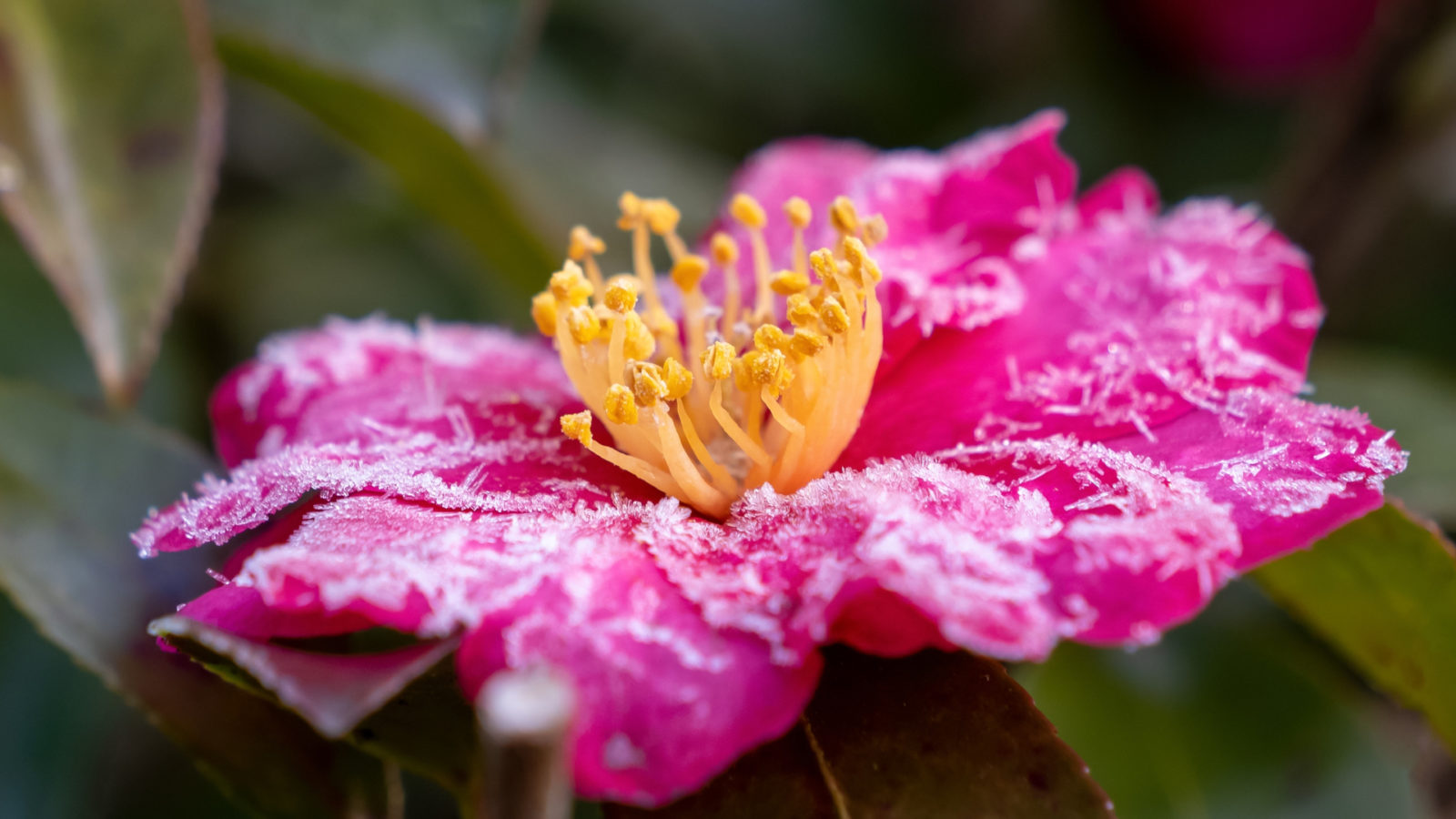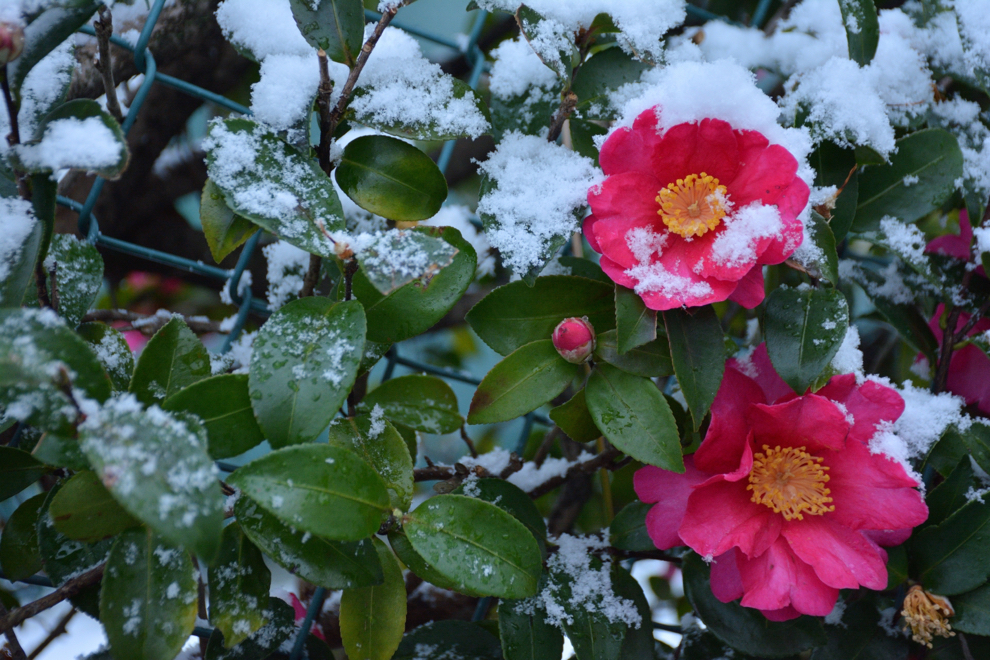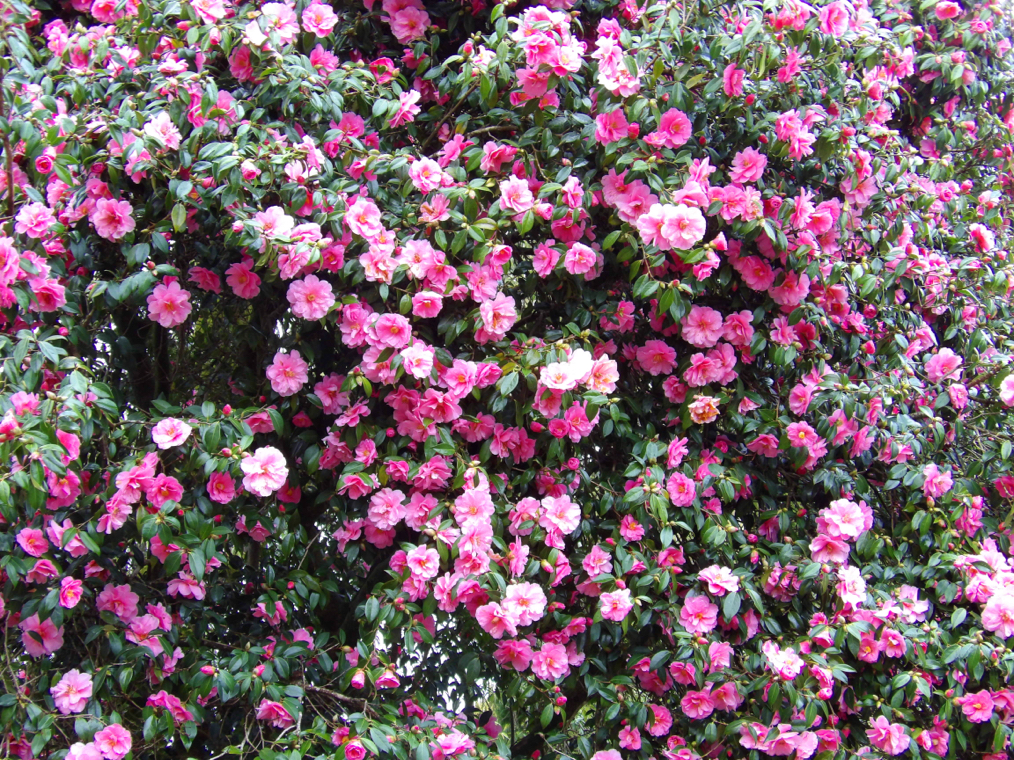Most Camellias Will Be Fine Over Winter – But Make Sure With These Guidelines

SHRUBS > CAMELLIA > OVERWINTERING

Elizabeth is a Permaculture Garden Designer, Sustainability Consultant and Professional Writer, working as an advocate for positive change. She graduated from the University of St. Andrews with an MA in English and Philosophy and obtained a Diploma in Applied Permaculture Design from the Permaculture Association.
Reviewed By COLIN SKELLY

Colin is a Horticulturist and Horticultural Consultant with experience in a range of practical and managerial roles across heritage, commercial and public horticulture. He holds the Royal Horticultural Society’s Master of Horticulture award and has a particular interest in horticultural ecology and naturalistic planting for habitat and climate resilience.
Contributions From PATRICIA SHORT

Patricia has over 35 years of experience growing camellias in her garden and is passionate about the joy they can bring to the dull winter months.

Lorraine has worked with camellia plants for over 40 years. Based in Wimborne (Dorset), the nursery has various camellia species, cultivars and hybrids for sale and has links to the International Camellia Society.
CAMELLIA GUIDES
Container Growing
Deadheading
Feeding
Problems
– Buds Falling Off
– Brown Leaves
Pruning
Soil Requirements
Sowing
Varieties
– Common Camellia
– Red Varieties
Winter Care
Camellia can often survive winter outside in most of the UK.
However, it is important to consider the hardiness of the particular camellia you are growing, how you are growing it, and your location – when determining whether your camellia will cope in its current position year-round.
When it comes to how to care for camellias in winter, here are some of the key things you need to think through:
- The type of camellia you are growing and its RHS hardiness rating.
- Whether you are growing your camellias in pots or in the ground.
- The winter conditions you should expect in your particular garden and in the precise location where the camellia is growing.
We discuss each of these in more detail below:
Different Types Of Camellia
Several different types of camellia are commonly grown in the UK.
The most commonly grown are C. japonica, C. x williamsii, and C. sasanqua.
C. japonica and C. x williamsii typically have a hardiness rating of H5, meaning that they are hardy in most places in the UK, even during extreme winter conditions.
However, plants with this hardiness rating might not always survive very exposed locations or central or northern locations.
Evergreens like camellias can also experience frost damage.

C. sasanqua is not as hardy and has a hardiness rating of H4.
This means that plants like it may suffer foliage damage and stem dieback in harsh winters in cold gardens.
Winter care, therefore, will usually require more thought if you are growing a particularly tender type of camellia.
You may need to think about moving tender types to a more sheltered and warmer location, or wrapping the shrub in horticultural fleece or some reclaimed fabric to protect buds and early flowers.
Patricia Short, UK-representative of the International Camellia Society, recommends wrapping some bubble wrap or other form of protection around camellia shrubs during extremely cold winters.
When Growing In Pots
One important thing to remember is that whichever type of camellia you are growing, plants will be more vulnerable to the cold if they are growing in pots or containers in your garden.
The roots of plants growing in containers are more vulnerable since they are up and out of the ground.
Therefore, especially if you are growing a more tender type (but even with hardier camellia in some locations), you might need to move container-grown plants to a more protected and sheltered spot during the winter months.
“If you are growing camellias in containers, do not let the compost become frozen in the winter,” says Lorraine Summers, from Trehane Nursery.
“During prolonged cold spells, insulate the container with bubble wrap around the outside or, if possible, bring the pot under cover.

“Depending on the size of the plant, flowers can be protected from frost on cold nights by covering them in fleece.”
You might even consider placing them in a cool conservatory or greenhouse, as Master Horticulturist Colin Skelly shares:
“A roof is often all that is required to avoid damage in cold weather for otherwise hardy plants like camellias.
“A shed, garage or porch; just think where you would try and snuggle up if you were locked out in your garden at night!”
You may also group containers together for protection, or wrap pots with insulating materials (as Lorraine suggests above) to stave off the cold.
When Growing In Other Locations
Camellia do need to be placed in a sheltered spot, especially through the winter months.
Even if you live in a warmer and more southern area, choosing the right placement can be key, whether growing in the ground or in pots.
I’ve found that it is best not to place camellias in a location where it gets early morning sun, as this can lead to more damage after a frost.

It’s also important to remember that winter wet can be damaging, as well as winter cold, so always ensure good drainage and make sure excess water can drain away freely.
Placing a camellia in the right position, out of frost pockets and early morning sun, and in free-draining soil can help you make sure that your camellia makes it through the winter well, wherever you live.
Just remember that in colder areas like mine in Scotland, you may well need additional protection to get a camellia safely through the winter months.
